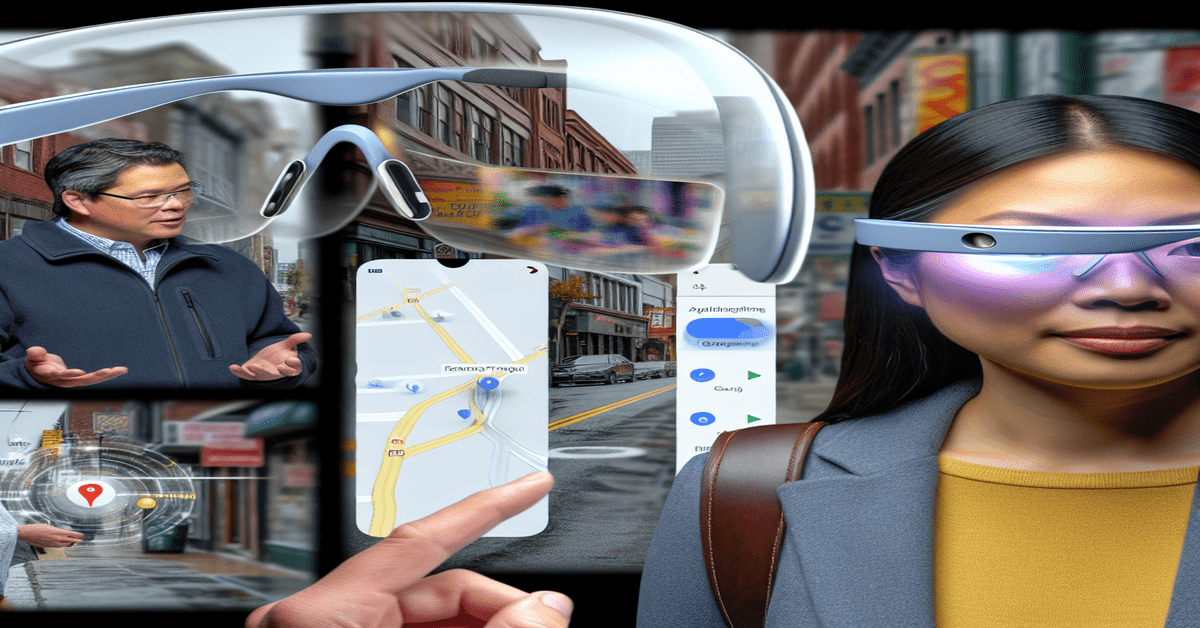Google’s XR Glasses: The Future of Wearable Tech is Finally Here
The world of wearable technology is about to be revolutionized with the introduction of Google’s XR (Extended Reality) glasses. Unveiled during the highly anticipated Google I/O 2025 keynote, these innovative glasses are set to change the way we interact with technology and the world around us. As an industry expert, I couldn’t be more excited about the potential impact these glasses will have on our daily lives.
A Brief History of Smart Eyewear
Before we dive into the specifics of Google’s XR glasses, let’s take a moment to reflect on the history of smart eyewear. Back in 2013, Google introduced Google Glass, a groundbreaking device that promised to bring the power of the internet right to our eyes. Despite the initial excitement, Google Glass faced numerous challenges, including concerns over privacy, limited functionality, and a steep price tag[1]. Ultimately, the project was shelved, leaving many wondering if smart eyewear would ever become a practical reality.
In the years since, various companies have attempted to create their own versions of smart glasses, but most have fallen short. Many of these devices have been too bulky, too expensive, or simply impractical for everyday use. However, Google’s XR glasses are poised to change all that.
The Future is Here: Google’s XR Glasses
So, what makes Google’s XR glasses so special? For starters, they seamlessly merge advanced AI capabilities with a sleek, compact design that looks and feels like a pair of ordinary glasses[1]. This alone is a significant breakthrough, as previous attempts at smart eyewear have often been clunky and conspicuous.
One of the most exciting features of these glasses is their ability to provide real-time translation of conversations[1]. Imagine traveling to a foreign country and being able to communicate effortlessly with locals, without the need for a translator or language app. This feature alone has the potential to break down language barriers and foster greater cultural understanding.
Another standout feature is the glasses’ navigation assistance, which utilizes an augmented reality overlay to guide users to their destinations[2]. No more squinting at your phone’s tiny map or getting lost in unfamiliar places. With Google’s XR glasses, you’ll have a virtual guide right in front of your eyes, making navigation a breeze.
Seamless Integration with Your Digital Life
In addition to these groundbreaking features, Google’s XR glasses also boast seamless integration with users’ phones and apps[3]. This means you’ll be able to access your favorite apps, receive notifications, and even make calls, all without ever having to take your phone out of your pocket.
Of course, with any new technology, there are bound to be skeptics. Some may question whether the AI capabilities of these glasses truly enhance the user experience, especially considering the potential subscription costs[1]. However, I remain optimistic about the potential for these glasses to deliver meaningful value to users, provided Google stays committed to the project and continues to refine and improve the technology.
The Impact on the Wearable Tech Industry
As an industry expert, I can’t help but be excited about the implications of Google’s XR glasses for the wearable tech industry as a whole. For years, we’ve been waiting for a device that combines practicality, functionality, and style, and it seems that Google may have finally cracked the code.
If these glasses live up to their potential, they could spark a new wave of innovation in the wearable tech space. Other companies will likely follow suit, pushing the boundaries of what’s possible with smart eyewear and AI integration. This increased competition and innovation can only benefit consumers, as we’ll likely see a wider range of options and features in the years to come.
The Bottom Line
In conclusion, Google’s XR glasses represent a major milestone in the world of wearable technology. With their advanced AI capabilities, practical design, and seamless integration with our digital lives, these glasses have the potential to revolutionize the way we interact with technology and the world around us.
While there may be some initial skepticism and concerns about cost, I believe that if Google stays committed to this project and continues to refine the technology, these glasses could become an indispensable tool for millions of people around the world.
As an industry expert, I encourage you to keep a close eye on the development of Google’s XR glasses and the wearable tech industry as a whole. We’re standing on the precipice of a new era in technology, and I, for one, can’t wait to see what the future holds.
What are your thoughts on Google’s XR glasses? Do you think they’ll live up to the hype? Let me know in the comments below, and don’t forget to like and share this post with your friends and colleagues.
#XRGlasses #WearableTech #GoogleIO2025
-> Original article and inspiration provided by ReviewAgent.ai
-> Connect with one of our AI Strategists today at ReviewAgent.ai


